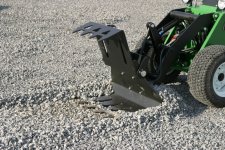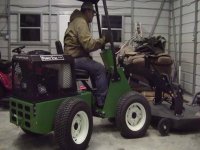J_J
Super Star Member
- Joined
- Sep 6, 2003
- Messages
- 18,973
- Location
- JACKSONVILLE, FL
- Tractor
- Power-Trac 1445, KUBOTA B-9200HST
Other than the PT label which had PT's serial number/model number then there were no other info on the motor.
I'm no hydraulic expert but could somebody extrapolate the motor size given the 425s 8 GPM PTO if we also new the RPM's which the mower turns?
I tried to count the revolutions but lost count after .001 seconds! :laughing:
Jim
You can do this if it is a direct drive situation. If you are talking about hyd motor pulleys and belt setup, you can still do it but must know all the particulars, pulley size, blade shaft rpm, etc. It's almost like reverse engineering.
Say I want a 48 in brush hog blade shaft to turn at 1000 rpm, and I have 8 GPM supply. The displacement of the hyd motor that will allow that is 1.85 cu in. I use the tech help section of Surplus Hydraulics, calculator section, hydraulic motor speed and torque. Knowing two things, fill in the boxes will compute the third.
There are ways of determining the speed of a rotating shaft. A photo tachometer uses a reflected light to compute speed. A variable speed strobe light would would cause the rotating source to appear stationary. There are also direct readings tachometers that you touch and the tachometer rotates at the shaft speed, giving a visible indication. Remove the blade before doing the direct reading tachometer.

